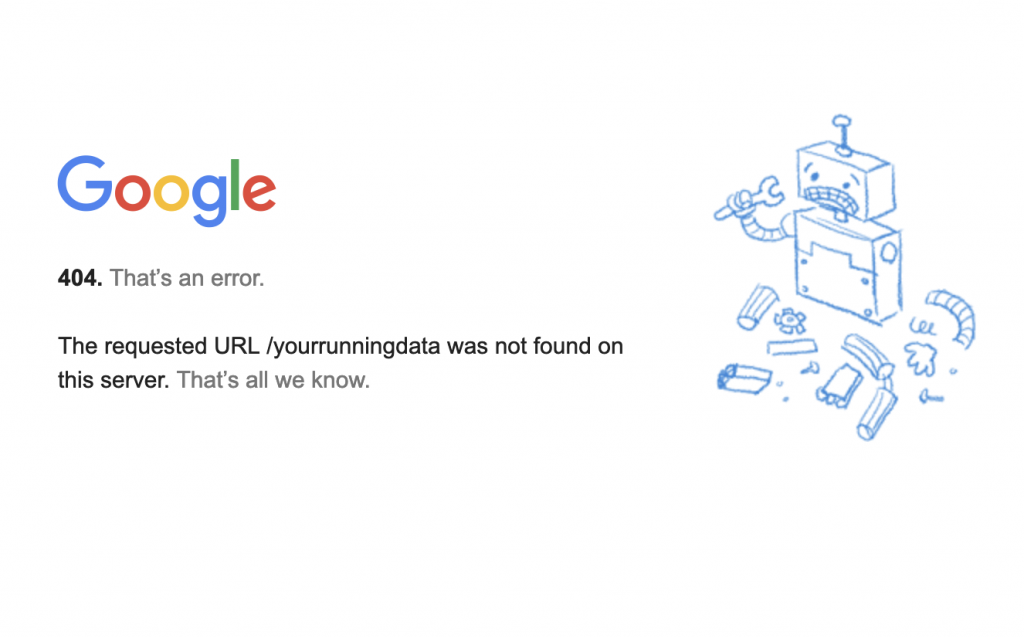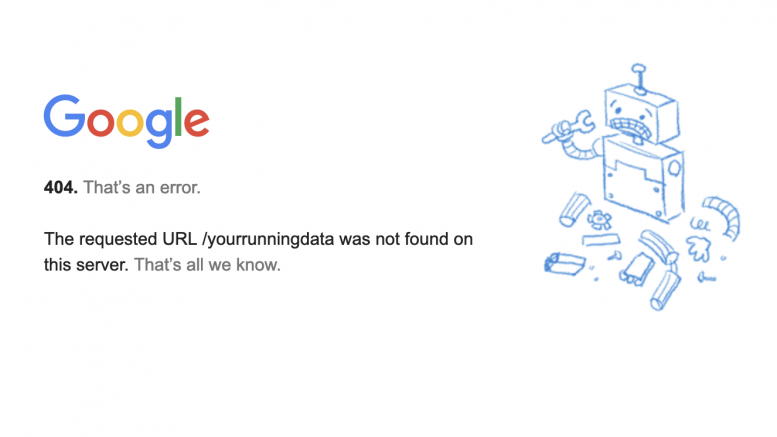Over the past few years, the trope “if it’s not on Strava…….” has circled within the running and cycling communities.
The fact is that many people use platforms such as Strava, Smashrun, Runkeeper, MapMyRun, Komoot to store their sporting lives. In the same way that Facebook et al is a place where people store all their memories, or at least share every facet of their lives with their online friends……
It got me thinking about this data. I mean it goes straight from your smart device off into the cloud where it sits on one (or more) of the various social sporting platforms in perpetuity.
Doesn’t it?
Some history
The first online running site thingy I used was called Endomondo. At the time I joined it I think I had to manually get the GPX datafiles into the website and then it would show up in very much the same way that Strava works these days. Now, back in the day I used a Nike sportwatch (I think that was even what it was imaginatively called!) and in those days Nike was a bit of a closed shop with how it held onto the data, so it might be that Endomondo worked fine but Nike wasn’t playing fair. I do remember in my early strava days having to use a workaround to get my previous data onto this newer (and more popular) orange website thingy.
I digress.
The point of the above story was that Endomondo was subsequently bought up by Under Armour but in 2020 they closed down the service. I’d long since stopped using it so was only aware of this in the tech news (and to be honest as a ‘niche’ platform it was tucked away).
Oh no!
So imagine if you went online to look at your running data, but instead of seeing a list of your running exploits you come face to face with this:

The reality is that should a site such as Endomondo, Strava et al decide to pull out of the game, the chances are you could lose a lot of historic data if you hadn’t previously gone in and exported it all.
Backup backup backup…..
I guess it’s nothing different to the idea of backing up your computer data, however these sites just work. At least until they don’t.
Now platforms such as Garmin tend to keep their own records of your workouts, but this continuity isn’t there if you’ve changed smartwatch manufacturer along the way. Indeed, for reasons I’m not entirely sure, my own Garmin records only go back to 2017 despite having Garmin watches since 2014. And even if you then went off and started using another service, just how much of the historic data is pulled back in isn’t always clear.
My own socials are more limited
Now as you might be aware, I actually deleted myself off strava in early 2022 (if you want to read about that, here’s the details). I actually didn’t even bother to rescue the 8 years of data that were on there. Quite a surprising move for someone who likes to obsess about data, but then it was an unpleasant time and I just wanted out.
It wasn’t entirely the end of the world, at least from a racing point of view. I’ve intentionally written up about all my races throughout my “competitive career” (2006 – 2019) and for me that gives all the information I really want to know about those times. Do I care about every random training run I’ve done? Not really. But if there was something worth noting, then I took the time to make sure it was noted.
That said I had a “backup” in that I’ve been using Smashrun for even longer (my data goes back to 2011) but it did get me thinking about what would happen if, one day, they decided to close down. Unlike the behemoth that is Strava, Smashrun is a much smaller company and is less well known.
Does it matter?
Of course, you might not care about any of the runs you’ve done in past years, and may never scroll back on your own running social media to look at routes you once did, or checking up on a race you took part in etc. So if all of that history vanished, perhaps you wouldn’t be bothered.
Export your data as a backup
But if it is something you are bothered about, it is possible to get an export of all of your data. Usually it’s on your account page and somewhere near the option to close & delete your account.
But whilst it’s possible to get the data out, what you’re left with is a zip-file with hundreds or thousands of GPX/FIT/TCX files (depending on what the platform chooses to export to) and no convenient way of looking at them. Smashrun at least labels them with the date of the run, but other platforms may not do this, which means you’ve got a large number of files that you can’t identify! Either way it’s not an easy task to see what is what!
Self hosting options
I started looking to see if there was any ‘self hosting’ options i.e. some way of hosting them on your own server and be able to access them in a similar manner to the ‘feed’ on Strava et al. There do appear to be some projects on GitHub which purport to do this, but as I’ve very limited coding skills, getting any of those up and running was beyond me. Aside from that, I’m not entirely comfortable with running computer code that I don’t understand. More than likely it’ll be fine, but it’s a sizeable risk that something could either be vulnerable to hacking or that it can steal data etc.
I’m going to continue to look to see if there is a home-brew way of maintaining all my own running files, just in case the companies out there currently providing these services decide to stop doing it.
GPXSee
In the meantime, armed with my folder of TCX files from Smashrun, I can at least view them with GPXSee; it’s perhaps not as convenient as firing up a web browser and scrolling through my running history, but it’s a more possible option for me at this time.
Hopefully Smashrun won’t be going anywhere, but at least I’ve already got a copy of my data should the worst happen.


Be the first to comment on "Who controls your online running data?"